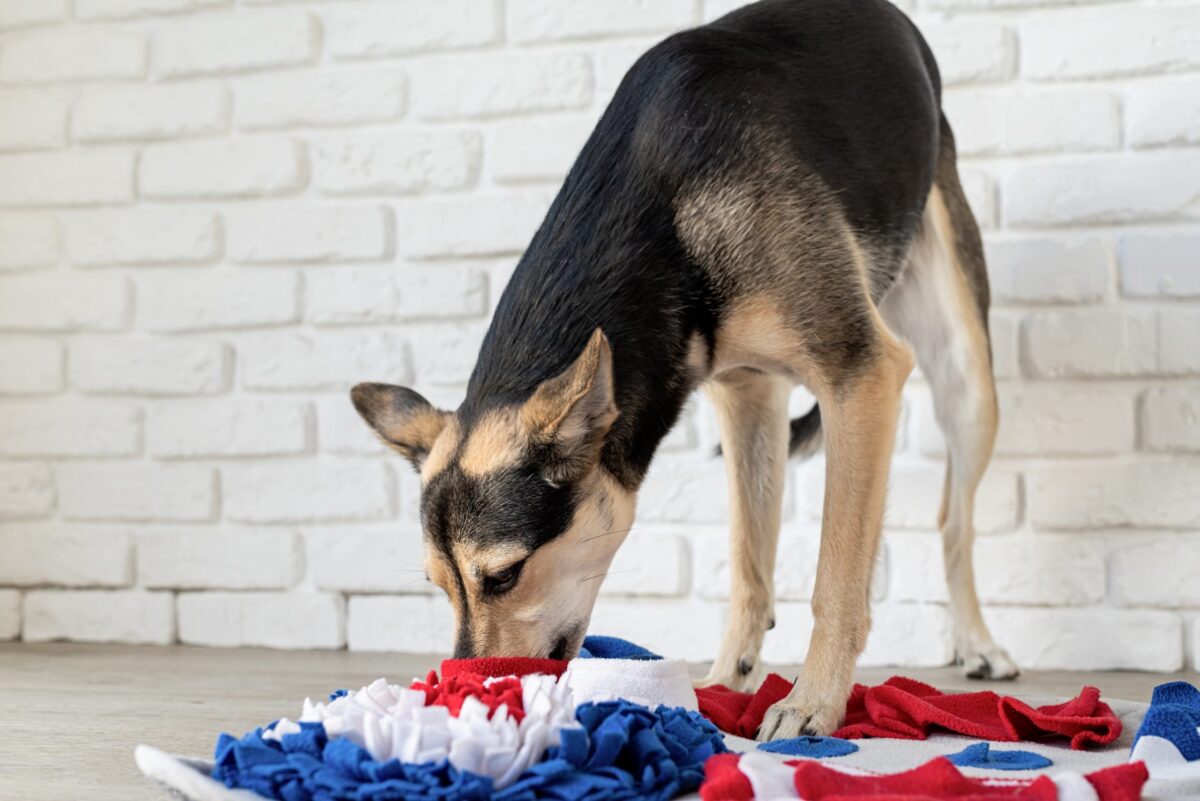

Dogs are incredible at communicating, but they don’t always need to bark to express themselves. They employ a range of subtle and sometimes noticeable methods to convey precisely what they need. While barking is a common vocal cue, many dogs communicate in more nuanced ways. These nonverbal cues—such as body language, eye contact, and even specific movements—give us valuable insight into their emotions and desires. Understanding these signals helps us respond to their needs and strengthen our bond with them.
Tail Wagging with Purpose

Tail wagging is one of the most well-known signals of a dog’s emotional state, but it’s not just about happiness. The speed, direction, and position of a dog’s tail can convey a wide range of emotions, from excitement to anxiety. A slow wag typically indicates uncertainty, while a fast, broad wag is a sign of joy and enthusiasm. When a dog holds its tail still or tucked, it signals fear or discomfort.
Eye Contact and the Power of the Stare

Dogs often use eye contact to communicate, signaling trust or affection with a prolonged gaze. But not all eye contact is positive—when a dog stares without blinking, it can indicate discomfort, aggression, or unease. Dogs also use their eyes to convey their desires, such as when they glance toward their leash or food bowl. The way a dog looks at you can tell you a lot about their emotional state and what they need from you.
Body Posture and the Silent Indicator

A dog’s body posture is one of the clearest ways they communicates without using words. A relaxed body posture typically signifies contentment, while a tense, stiff stance can indicate anxiety or a readiness to defend. A dog that crouches or lowers its body is showing submission or fear. By understanding your dog’s posture, you can tell if they feel comfortable, threatened, or excited about something.
The Sniff Test and Dogs’ Way of Getting Information

Dogs rely heavily on their sense of smell to understand the world around them, and they communicate their needs by sniffing. If your dog is sniffing you, they’re likely trying to gather information about your mood, health, or recent activities. Sniffing can also indicate curiosity or interest, such as when your dog sniffs the door because they want to go outside. Excessive sniffing, on the other hand, may suggest that your dog is feeling anxious or trying to comfort itself.
Pawing and the Subtle Request for Attention

Pawing is a behavior that can communicate a variety of needs. When a dog paws at you, they’re often trying to get your attention, asking for petting, food, or to go outside. Pawing can also be an affectionate gesture when a dog wants to cuddle or engage in play. If a dog paws at their leash or the door, they might be signaling that it’s time for a walk, or they need to go outside.
Licking and the Sign of Affection or Need

Licking is a behavior that dogs use to show affection, but it can also indicate other needs. Some dogs lick their owners when they’re feeling anxious, stressed, or even hungry. It can also serve as a form of self-soothing when they’re feeling uncomfortable or nervous. Dogs often lick to communicate their feelings or to ask for something, such as a belly rub or a treat.
Circling or Pacing and Restlessness at Its Finest

When dogs begin to circle or pace, they’re often expressing restlessness or anxiety. This type of behavior is commonly seen when a dog is stressed or in a new, unfamiliar environment. Some dogs may circle before lying down, a behavior linked to their instinctive need for comfort. Pacing is often a sign of discomfort or anxiety, particularly if the dog is unable to settle down in their surroundings.
Drooling and Excessive Salivation

While drooling is a normal behavior for many dogs, excessive salivation can be a sign of anxiety. Dogs that are feeling stressed, fearful, or uneasy may drool more than usual. Some dogs also drool when they’re anticipating something they want, like food or attention. If drooling is accompanied by other signs of distress, such as restlessness or panting, it could indicate your dog is experiencing anxiety.
Sleeping Behavior and the Clue to Emotional Well-being

Dogs’ sleeping habits often reflect their emotional state. If a dog is sleeping excessively, they could be feeling overwhelmed or depressed. On the other hand, dogs that are stressed or anxious may struggle to sleep, showing restlessness or pacing at night. A dog’s sleep behavior can be an essential indicator of their emotional well-being, helping you recognize if they’re dealing with stress or feeling emotionally balanced.
Yawning and More Than Just Sleepiness

While yawning is commonly associated with tiredness, dogs often yawn as a sign of stress or discomfort. If your dog yawns excessively in stressful situations, such as during a vet visit or a car trip, it may be a self-soothing mechanism. Yawning can help relieve tension or calm nerves, much like humans take deep breaths to alleviate anxiety. Recognizing when a dog is yawning out of stress can help you address their needs.
Hiding or Seeking Comfort

Dogs may hide or seek comfort when they’re feeling anxious, fearful, or unwell. This behavior often happens in response to stressful situations, such as loud noises or unfamiliar environments. A dog that hides under furniture or in a quiet corner might be trying to cope with their anxiety. Similarly, seeking comfort from their owner can signal that they need reassurance or emotional support in times of stress or discomfort.
The Silent Paw-some Communicators

Dogs are masters of non-verbal communication. By paying attention to their body language and subtle behaviors, you can decode what your dog needs without a single bark. Your dog is always trying to tell you something important. Understanding their silent signals not only strengthens your relationship but also helps you meet their needs in ways that go beyond barking. It’s a dog’s world, and sometimes, we need to listen without words! After all, they’re experts at speaking volumes with just a glance.
The post 11 Ways Dogs Communicate What They Need Without Barking appeared first on iHeartDogs.com.
via Whisker Therapy